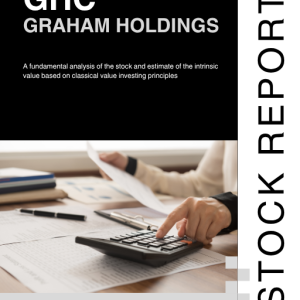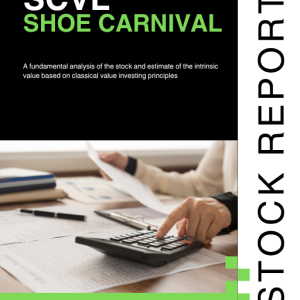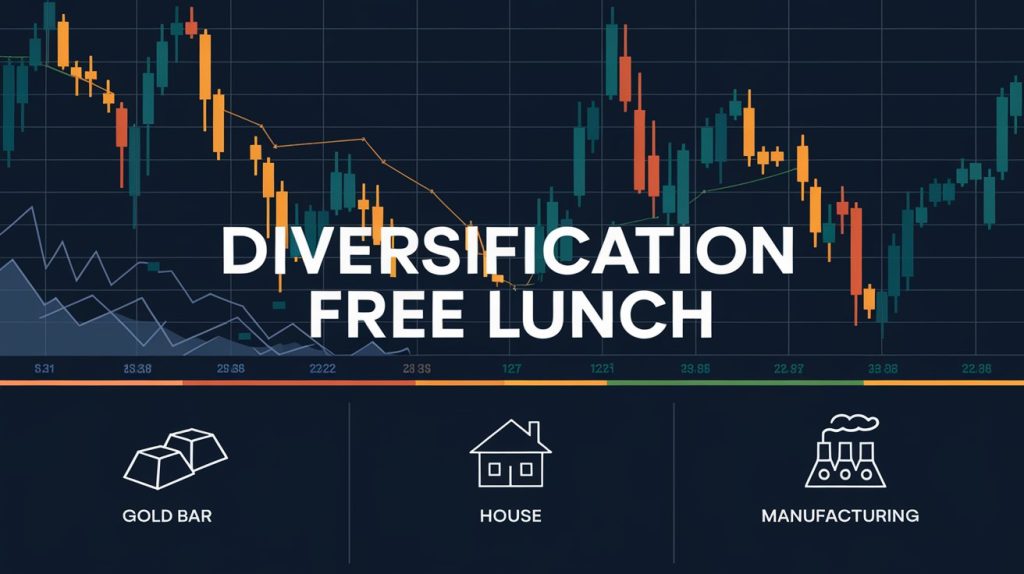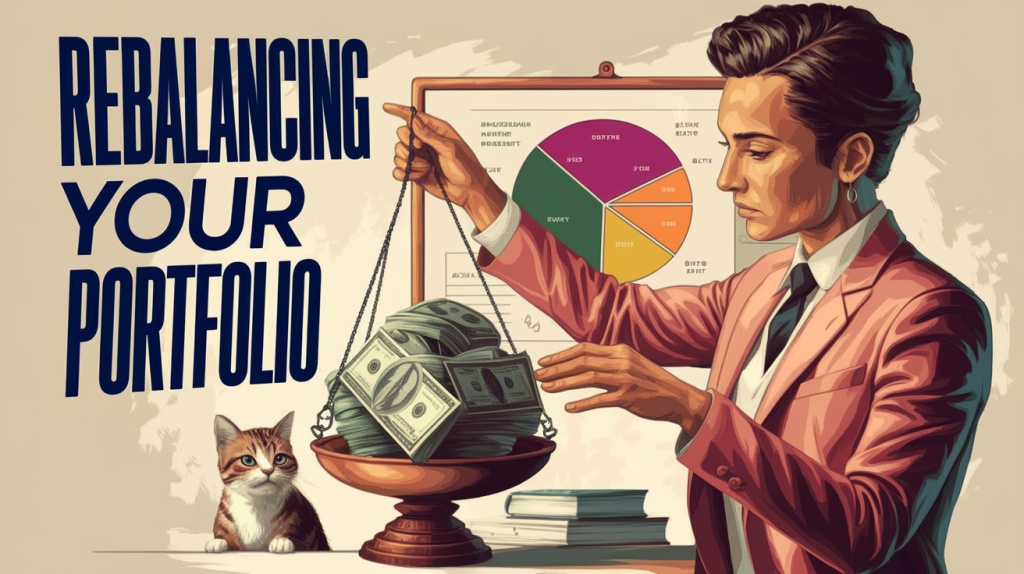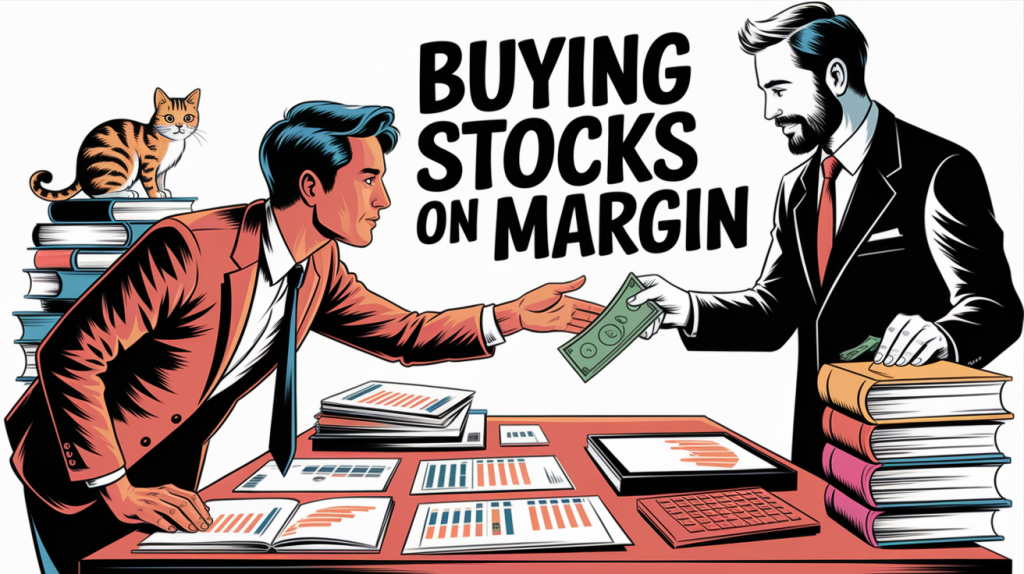
I have made a lot of money buying stocks on margin. But I have also lost money. Investing on margin can bring rapid gains to your portfolio, but if you are not careful, it can also blow up your portfolio. We don’t want to blow up our portfolios. Let’s review how we can avoid this.
In this article I will give you tips on how to buy stocks on margin responsibly, so you can maximize returns while minimizing risk.
Understanding How Buying Stocks on Margin Works
Margin trading involves buying stocks using money borrowed from your broker. You will need to have a margin account to do this. If you do not have one, you can typically ask your broker to enable margin trading on your account. Most brokers will require you to have a certain level of assets for you to be able to borrow funds on margin.
The broker lends you money using the stocks in your account as collateral. There is a standard 50% initial margin requirement, and depending on the stock, its volatility, liquidity, etc, the broker may choose to increase or decrease the margin requirement.
Let’s say you have an account worth $10,000. This means at 50% initial margin requirement you can typically borrow $5000 from the margin facility to buy more stocks. These additional stocks, once purchased, can also be used for further collateral, giving you 50% of their value as additional margin. If the value of the shares in your account rises, you will free up more margin based on the increased value, and you can utilize these to make more purchases if you like.
As you can see, in the rising market, you can really snowball your portfolio using margin.
When the stocks begin to fall though, it can get really bad. If you no longer have the collateral to support the margin you are carrying, you will be forced to either put up more capital, or liquidate your holdings to come back into margin compliance. If a stock goes to zero, and you had levered up to buy it, you can actually lose more than your initial capital investment in the stock.
So as you see, margin has the ability to amplify both your gains and losses.
There are other differences between a margin account and a traditional brokerage account, which is a cash account. In a cash account, every transaction requires a period of settlement, now 1 business day in the US. So if you sell stocks today, the funds will be credited to your account today, but are not considered settled until 1 business day later. There are regulations about what you can and cannot do with unsettled funds. A margin account removes these constraints as the broker is letting you do transactions on credit, and they handle the settlement process on their own account.
Before you even consider margin trading, it’s crucial to understand how it works and what obligations you’re taking on. Now, let’s look at the risks you need to manage.
The Biggest Risks of Buying Stocks on Margin
As we have seen, one of the biggest risk is that the losses can be magnified. A small market drop, if you are margined to the hilt, can wipe out your capital with cascading margin calls and unplanned liquidations.
What is a margin call? When the broker determines that you do not have enough collateral to support the funds you have borrowed on margin, they will issue you a margin call. A margin call requires you to add more funds or securities to your account, typically in 2 to 5 business days, to cover the required maintenance margin. The broker has the right to liquidate positions in your account to satisfy a margin call, if you do not act promptly. Brokers regularly do this, and often at inopportune times. Of course, a lot of traders/investors getting margin calls on a falling stock, and then having to liquidate the stock to satisfy the margin call, causes the stock price to fall even more due to increased selling pressure. As you can see, this will cause the stock price to swing to the extreme, and can be a disaster for you if you get caught overlevered.
On the flip side, if you have plenty of cash available, you can take advantage of these margin-fueled stock drawdowns and snap up a good stock at bargain prices.
Even if you manage to avoid this nightmare scenario, you will have ongoing costs such as paying interest on the margin loan. If you have large assets at the broker, the interest rate may not be much, but it is a cost that you will incur even if the stock does not generate profits for you. This cost will have to be accounted for in your returns expectations.
One of the biggest risk of buying stocks on margin is psychological. Borrowing money on margin is too easy, and this can lead you into reckless bets. I recommend every investor to have a solid risk management process, but if you are using margin, this is an absolute must. Overconfidence and greed will kill your portfolio, so prepare for it by laying down some ground rules – setting limits and plan of action when things don’t go your way.
Given these risks, how can you use margin responsibly? Let’s explore key strategies that can help you stay in control.
Smart Strategies for Using Margin Safely
There are a few things you can do to manage your risks and use margin safely.
- Only use margin for high-conviction trades – You should not be buying a stock that you do not have a high conviction in. This is doubly true if you are borrowing money to buy that stock. For any other stock, forego margin.
- Keep your debt-to-equity ratio low – Even if you are able to borrow your full account value as margin, this is not a smart thing to do as it leaves you with no room for any price movement down, however temporary it may be. I recommend never exceeding 30% of your portfolio as margin.
- Always maintain a margin cushion – You should have cash available elsewhere or ability to raise cash at a quick notice, if you need to satisfy margin, to prevent forced liquidations.
- Set hard stop-losses to protect your capital – Most value investors do not believe in stop-losses, and therefore investing on margin is not a good idea for them. If you do decide to buy stocks on margin, make sure you have hard stop-losses on every stock, and you faithfully execute them as set. When markets are going down fast, it is wise to survive so you will have another opportunity later.
- Pay off margin debt quickly – Most margin loan is high interest, and it will just erode your portfolio relentlessly until it is paid off.
- Avoid margin during market volatility – Margins collapse with spectacular rapidity in a declining market. It may be tempting to “load up” when you think the market is cheap, but remembers, markets can stay irrational longer than you can stay solvent.
This is a short list of tips and strategies, but if you follow just these faithfully, you will avoid most of the catastrophic consequences of investing on margin.
In addition to this, please remember that each broker has their own way of handling margin calls. Some brokers are more aggressive on liquidating positions than others. Brokers also differ on the interest rates they charge for margin, and higher balances often have better rates. Keep these in mind as you build your margin strategy.
Case Studies: Traders Who Won (and Lost) Using Margin
Jesse Livermore is one of the most famous tales of a trader who made millions of dollars trading on margin, and then lost it all. He did this multiple times in his career. He used a strategy called “Pyramiding” – when a stock price went his way, he kept increasing his holding, often dipping into margin to do so. When the stars all align, a stock with momentum can carry a small initial investment into large gains with enough pyramiding and margin to support it.
I myself have converted a few thousand dollars worth of initial investment in a stock (Jones Soda, long time ago) to close to half a million dollars in a few weeks time with margin and pyramiding.
Of course, many of these successes use margin as a tool but have ample amount of luck thrown into it. They could have ended badly just as easily. In fact, excessive margin trading brought Long Term Credit Management down, and along with the reputations of its noble prize winning principals. It blew up so hard that the US economic system was in peril and the Feds had to mount an extraordinary bailout to protect the financial system from the fallout.
Margin Trading is a Tool—Use It Wisely
Margin is neither good nor bad—it’s how you use it that matters. It is just a tool. use it wisely and responsibly and it will enhance your returns. Use it recklessly and it will destroy wealth. Stay disciplined, manage your risk, and do not let leverage tempt you or control you.
Featured products

Shailesh Kumar, MBA is the founder of Astute Investor’s Calculus, where he shares high-conviction small-cap value ideas, stock reports, and investing strategies.
His work has been featured in the New York Times and profiled on Wikipedia. He previously ran Value Stock Guide, one of the earliest value investing platforms online.
Subscribe to the Inner Circle to access premium stock reports and strategy insights.
Featured in:




